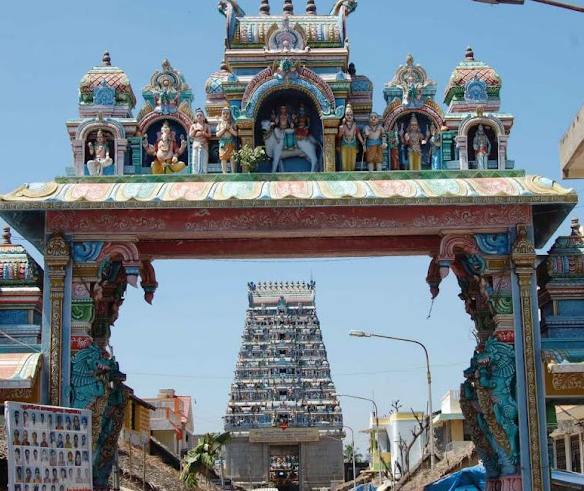King Nalan of the Nidatanatu dynasty married Princess Damayanti of the Natu clan. However, the gods were envious of their union, as they too desired to marry Damayanti. Filled with jealousy, they approached Saneeswaran (the deity representing Saturn), asking him to intervene. Saneeswaran afflicted King Nalan for seven and a half years, subjecting him to immense suffering to prove his purity.
Despite losing his wife, kingdom, and even his clothes, King Nalan remained unfazed by his hardships. In desperation, he sought refuge by worshipping Lord Dharbaranyeswarar at Thirunallar. Pleased by his devotion, Shani relinquished his hold over Nalan, freeing him from his torment. As a result, Shani, facing eastward, bestowed a blessing on King Nalan, granting him protection from further harm. This is why Shani at Thirunallar is called East-facing Saniswaran, blessed by Lord Shiva. Worshipping Shani at this temple is believed to help devotees overcome Saturn's ill effects. Additionally, those who study the legend of Nala (Nalasaritham) gain self-confidence and can overcome Saturn-related challenges in their lives.
In the temple, the Nandi (sacred bull) and the altar are positioned slightly aside, following an ancient tradition connected to King Nala's commands.
Administration History :
The temple underwent significant renovations, culminating in the Maha Kumbhabhishekam on 24th March 2006. It is currently under the administrative control of the Dharmapuram Adheenam, a prominent religious institution responsible for its management. This organisation ensures the temple's upkeep, rituals, and community engagement. The Adheenam plays a vital role in preserving the temple's heritage and facilitating worship for devotees. Overall, the administration focuses on maintaining the temple's religious and cultural significance in the region
